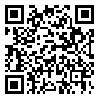BibTeX | RIS | EndNote | Medlars | ProCite | Reference Manager | RefWorks
Send citation to:
URL: http://jast.modares.ac.ir/article-23-40520-en.html
Doogh, a favorite acidic dairy drink, usually sufferd from low stability and swelling due to microbial activation, protein aggregation and consequently phase separation which happens at low pH. In this study optimization of doogh powder production stabilized by pectin and tragacanth was performed using response surface methodology for selection of appropriate hydrocolloid and processing condition. The results showed that the quality of doogh powder strongly depends upon the spray drying temperature and type of hydrocolloid addition. Optimum operating conditions were found to be an inlet air temperature of 122 ºC and stabilization using tragacanth, under which moisture content, bulk density, solubility, Carr index, serum separation, color (L factor), pH, Hausner ratio, and porosity were 5%, 0.31%, 88%, 37, 65%, 89, 4.33, 1.59% and 73.5%, respectively. Evaluation of sensory attributes (color, odor, flavor, consistency, and total acceptance) confirmed that there was no significant difference (p>0.05) between dried doogh powder produced in optimized conditions and freshly prepared sample.
Received: 2020/02/7 | Accepted: 2021/02/7 | Published: 2021/08/29
| Rights and permissions | |
 |
This work is licensed under a Creative Commons Attribution-NonCommercial 4.0 International License. |







